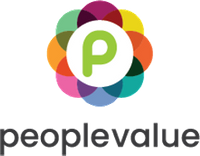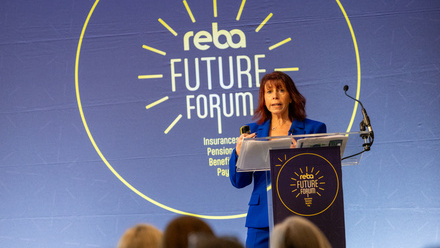Top tips to ensure your remote workers feel connected to your culture and community

Having employees that are physically separate from their colleagues and the general work environment might not be a logistical problem for your business, but because they miss out on daily social encounters and aren’t a visible part of your community, it can mean that they’re less aligned to your values and culture.
This can be really problematic long-term, because having meaningful connections with our colleagues helps us feel a sense of belonging at work, which is what drives our levels of job satisfaction, motivation and productivity. It also supports our social wellbeing which in turn helps us feel happier, healthier and able to cope with job stress better.
It’s therefore really important that your remote workers feel like they’re a valued part of your community and aligned to your culture, despite the fact they’re not physically present. So, here are some helpful tips to bring your workforce together:
Utilise a range of communication tools
Remote workers can sometimes fall victim to the ‘out of sight, out of mind’ trap, which means that they can be unintentionally forgotten about, leaving them feeling even more detached from the rest of the business. This is why communication is absolutely crucial in helping your remote workers feel connected to their colleagues and more in tune with your business’ culture.
While it might seem obvious and straight forward, it’s important to point out that to engage your remote workers effectively, communication is about far more than sending a quick ‘check-in’ email now and again. To really enhance your employees’ sense of belonging beyond the parameters of your physical work space, it’s about utilising a range of tools to essentially mimic the real-life social interactions that your remote workers miss out on day-to-day.
Instant messaging services like Microsoft Teams are useful because employees can have a quick back and forth conversation with a colleague or group of colleagues, whether they are remote or not. Tools like this are handy because of their immediacy – employees can use them to get simple answers to their questions and for more informal interactions throughout the day.
Video calls are also valuable because they help to counteract the lack of face-to-face contact that comes with working in isolation. This means that when remote workers are having a conversation with someone or taking part in a meeting, for example, they can still have a physical presence and in turn feel like they’re in the same room as others. Simply seeing a friendly face, even if it’s on a screen, can really boost morale for employees that are spending most of their working life in solitude.
Taking advantage of these kinds of online communication tools will help to drive a sense of teamwork, collaboration and camaraderie among your whole workforce, not just for those that work remotely. It’s important that these are routinely used throughout your business so that remote workers are involved in day-to-day life as much as possible and they feel in the loop.
Celebrate your remote workers
Your remote workers’ daily activities and achievements might be acknowledged by those that they work with directly, but they won’t be visible to most of your business. This lack of visibility means that remote workers are less likely to receive recognition, which can leave them feeling less valued than those around them, further contributing to feelings of isolation and disengagement.
This doesn’t have to be the case though. With employee recognition platforms, people from all areas of your business can log in and thank a colleague whenever they feel it’s relevant. This ‘thank you’ then gets shared for everyone in the business to see, shining a spotlight on the individual efforts of employees that are doing great work across the business.
For remote workers, this not only gives them the opportunity to gain visibility when they get recognised, they can also use the platform to interact with others and build relationships. On top of that, they also get a valuable insight as to what’s going on in the business through the other instances of recognition that are shared.
Recognition platforms of this nature essentially act as a hub of positive communication between employees. Being able to log in from home or on the go, your remote workers can see appreciation being shared and equally feel that appreciation from others too which is a great way of reinforcing their sense of purpose, value and belonging, thus enhancing their connection to your culture.
Share regular updates
In normal circumstances, where employees work in close proximity and in one space, it’s very easy to get access to business information and the latest news from their daily conversations with colleagues and general word-of-mouth. But now, for remote workers, it’s a bit more challenging to stay up to date. To be the last in line to hear about what’s going on in the business can be very disheartening, demotivating and disengaging, so it’s important that your remote workers are never left in the dark.
To combat this, make sure you’re regularly sharing updates and information with your workforce. There are a number of ways to do this effectively, but using an employee hub is especially useful because it centralises all of your activities into one, easy to locate and access space. Rather than having to remember to update various pages or systems to make sure you reach all areas of your business, you can simply use your hub as the ‘go-to’ platform for a wide range of information and resources. You can even integrate schemes such as your employee benefits, reward and recognition and wellbeing programmes too.
Similar to an employee intranet, a hub provides clarity on where all your information is held, but it can also be used as an internal social tool to drive interaction and collaboration between your employees. With features like employee profiles and social feeds, a hub acts as a network through which your employees can connect, communicate and engage with your business’ culture. In this way, it holds an online community that your remote workers can feel part of. So, whenever they like, they can tap into content, interact with colleagues and feel part of your culture despite their physical distance.
Rupert Cottrell, peoplevalue’s employee engagement specialist, comments: “Having worked from home for the last 12 or so years, I am so aware of the importance of staying connected to the business whilst working from home. It is vital to ensure that your remote workers are included in important communications and where possible speak to them daily.
“There are many methods that we can utilise now with technology being so readily available. It’s all about speaking, facetiming, emailing and texting as many people within the business to ensure that you are as present as possible. Here at peoplevalue we can also utilise our social wall and recognition tools to ensure everyone has visibility. With everything that is going on in the world and more people working from home, we need to adapt to include all members and to ensure they are engaged!”
This article is provided by peoplevalue.
Supplied by REBA Associate Member, peoplevalue – The Employee Engagement Company
We are a leading provider of employee reward&recognition, benefits delivery&wellbeing solutions.







